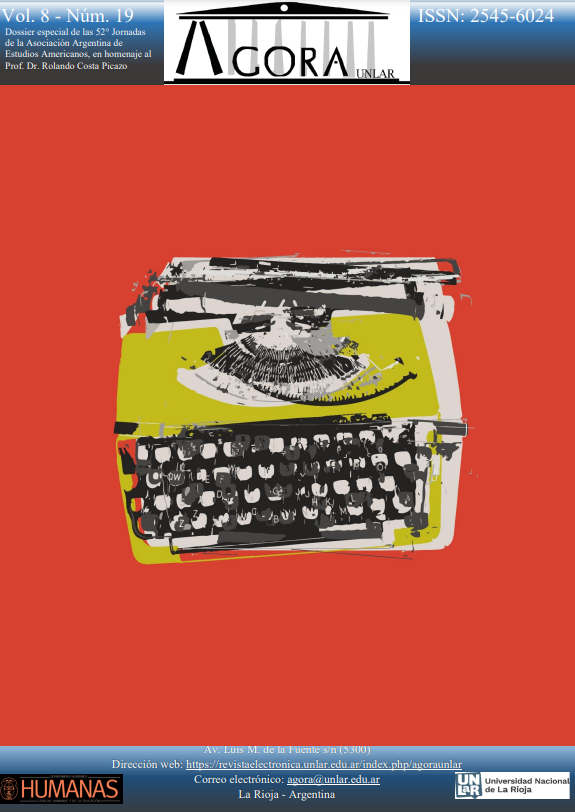Taxi Driver (1976) y Cruising (1980): perfiles del cruzado posindustrial en el cine neoyorquino de la década del setenta
Palabras clave:
Cine neoyorkino, años setenta, narratologíaResumen
Desde comienzos de la década del setenta, la guerra con Vietnam, el escándalo de Watergate, la recesión que en la posguerra puso fin a la expansión económica. El sueño americano, sólidamente incrustado en el colectivo estadounidense, parecía más inalcanzable que nunca. Este escepticismo hallará su escenificación en todos los ámbitos de la cultura, con el cine ocupando un lugar preponderante. En esta ponencia se plantea una lectura comparativa entre Taxi Driver (1976) de Martin Scorsese y Cruising (1980) de William Friedkin. Los protagonistas de ambas películas se construyen como cruzados posindustriales dentro del submundo de la Nueva York de los setenta que demostró en los tugurios nocturnos la corrupción de ese sueño. Sin embargo, a pesar de que los periplos morales de ambos personajes parezcan en primera instancia paralelos, en realidad, avanzan en direcciones distintas: sus caminos se interceptan sólo en la katabasis (el descenso al repertorio de geografías ocultas de la ciudad: los bares leather gay, los cines porno, los rincones más oscuros del Central Park), pero sus motivaciones y resoluciones son diametralmente opuestas. Mientras que Travis Bickle, el veterano de guerra, se purifica al devenir vigilante, Steve Burns, el policía, se degrada para ascender en el cursus honorum del precinto. Haremos uso de herramientas de la narratología (Greimas) y nociones provenientes de la filosofía del cine de Ángel Faretta, en especial sus estudios sobre la representación del mal en el cine neoyorquino de la década del setenta.Taxi Driver (1976) And Cruising (1980): Sides of the Post-industrial Crusader in New York Cinema During the SeventiesAbstractDuring the early seventies, the Vietnam War, the Watergate Scandal, the recession that in the post-war era put an end to the economic expansion, the unemployment, the gentrification and the resulting precarity in the big cities started to discolor the national ethos of the old United States. The American dream, sturdily embedded in the country’s collective psyche, seemed more out of reach than ever. This skepticism would find its staging in all cultural fields, with cinema leading the scene. This paper outlines a comparative reading between Taxi Driver (1976) by Martin Scorsese and Cruising (1980) by William Friedkin. The main characters in both films are built as post-industrial crusaders within New York’s underworld in the seventies that showed in its nocturnal slums the corruption of that dream. Despite the fact that both characters’ moral journey would seem parallel at first glance they actually progress in different directions: their paths only cross in the katabasis (the descent to the repertoire of the city’s hidden geographies: the leather gay bars, the porn theaters and the darkest corners of the Central Park), but their motivations and destinations are diametrically opposite: while Travis Bickle, the war veteran, purifies himself by choosing the vigilante’s path, Steve Burns, the cop, breaks bad in order to climb up the precinct’s cursus honorum. We will resort to tools of narratology (Greimas) and notions derived from Ángel Farettas’s philosophy of film—especially, his studies about the representation of evil in New York cinema during the seventies. Keywords: New York cinema, 70s, narratologyDescargas
Publicado
21-09-2023
Número
Sección
ARTÍCULOS DE INVESTIGACIÓN O REVISIÓN TEÓRICA





